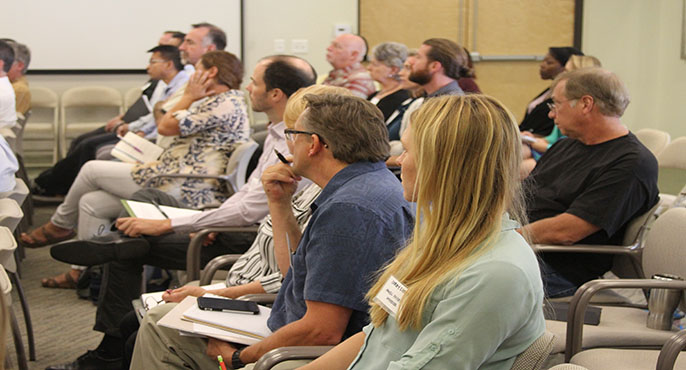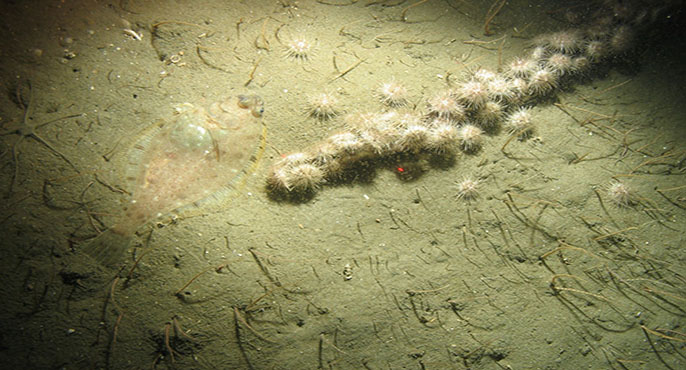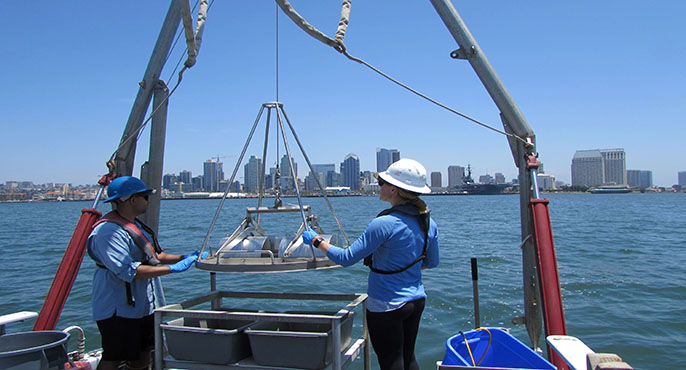The Southern California Bight Regional Monitoring Program is an ongoing marine monitoring collaboration that examines how human activities have affected the health of more than 1,500 square miles of Southern California’s coastal waters. Via this partnership that is facilitated by SCCWRP, dozens of participating organizations pool their resources and expertise to investigate the condition of marine ecosystems across both time and space. Both regulated and regulatory agencies, as well as nongovernmental and academic organizations, come together to design studies, interpret findings, and speak with a common voice about the ecological health of the Southern California Bight.

Monitoring an ecosystem at risk
The Southern California Bight, which is a concave bend in the coastline stretching from Point Conception in Santa Barbara County to Punta Colonet in Mexico, has long been vulnerable to the impacts of human activities. The Bight coastal zone is home to more than 22 million people engaged in a wide variety of industrial, military and recreational activities along the coastline. Additionally, about 5,600 square miles of watersheds across coastal Southern California drain to the Bight, nearly half of which have been intensively developed.
Southern California’s environmental management community relies on the Southern California Bight Regional Monitoring Program to better direct resources and to maintain focus on the areas and issues that pose the greatest threats to ecosystem integrity. Bight participants agree upfront on the courses of action they would take depending on the study findings. Program participants also use the Bight program to develop coordinated, follow-up studies outside the program, and to shape future directions for Bight program studies.

Bight ’23 continues collaborative program
The seventh cycle of the program – known as Bight ’23 because field sampling commences in 2023 – builds on the collaborative spirit and commitment to scientific excellence that have been hallmarks of Bight regional monitoring since its inception in 1994. As with past program cycles, Bight ’23 participants have revised and reworked multiple program studies. The seven major study elements in Bight ’23 strike a balance between the need to track ecosystem trends over time, and evolving the program to remain responsive to pressing issues of management concern in coastal Southern California.
- Sediment Quality examines how Bight sediment contamination affects the ecological health of coastal ocean habitats across time and space.
- Water Quality tracks how climate change is altering Bight seawater chemistry and how changes such as ocean acidification, hypoxia and warming water temperatures are affecting biological communities. The program is also investigating the effects of local human activities on land in changing the trajectory of these changes.
- Harmful Algal Blooms examines how toxins created by some types of blooms can be transported through waterways and linger in seafloor sediment, where they can potentially impact the health of marine animals for months, including shellfish consumed by humans.
- Trash and Microplastics tracks the extent to which trash has spread across aquatic environments on land and at sea, and the types and abundance of trash in these settings. The Bight program is test-driving newly developed statewide sample collection and measurement methods for quantifying microplastics levels in Bight habitats.
- Microbiology examines microbial water quality at Southern California beaches to generate data and insights that can help managers more expeditiously protect public health.
- Estuaries assesses the condition of Southern California’s low-lying coastal estuaries, with a goal to understand how their ecological functioning has been adversely affected by human activities and how resilient they will be in the face of future climate change.
- Submerged Aquatic Vegetation documents the locations and sizes of eelgrass beds across Southern California coastal waters and assesses their ecological health – in particular, their ability to provide habitat for fish and other marine animals at critical life stages.
Woven into Bight ’23 is a regional shellfish safety assessment that will generate insights for multiple study elements. The shellfish assessment will investigate health risks for humans and marine life exposed to harmful algal bloom toxins, pathogens, microplastics and other contaminants from consuming shellfish.
Bight Program Resources

